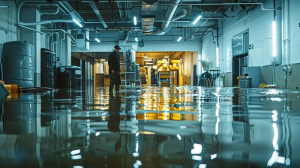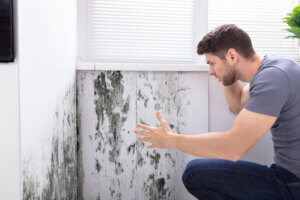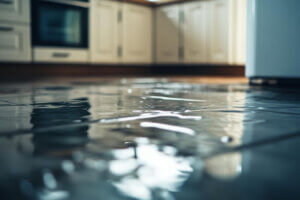Water damage can seem overwhelming, but restoring your home to its former state is entirely possible with the right tools and expertise. We specialize in water damage restoration and removal, employing various high-tech equipment to tackle even the toughest of floods. Understanding the tools we use not only provides insight into how we approach water removal but also ensures that you, as a homeowner, feel more confident in the care we provide.
Our arsenal of water removal equipment is diverse, designed to address different aspects and degrees of water damage. From powerful pumps that extract water rapidly to sophisticated dehumidifiers that aid in drying out your spaces, each tool plays a critical role in the restoration process. Knowing what these tools are and how they operate helps demystify the water damage recovery process, making it less daunting for those affected.
In this article, we will take a closer look at the specific types of equipment we rely on to remove water and moisture effectively. By understanding these tools, you’ll gain a better appreciation of the steps involved in returning your space to a dry, safe state following any water intrusion.
Types of Water Removal Equipment We Use
In our line of work, employing the right tools is essential for efficiently managing water damage and restoration. We use a variety of water removal equipment to address different scenarios that might arise in our clients’ homes or businesses. Each piece of equipment plays a crucial role in ensuring that water is removed quickly and effectively to minimize damage and promote faster recovery.
We typically start with submersible pumps, which are ideal for clearing high water levels in submerged areas like basements. Water extractors are then employed; these powerful tools not only remove the water but also help in extracting moisture from carpets and upholstery, preventing mold growth and further damage. For smaller, hard-to-reach areas, we use portable wet/dry vacuums. These versatile tools allow us to remove water from corners and crevices that larger equipment can’t reach, ensuring thorough water removal throughout the property.
How Our Powerful Pumps Clear Flood Water
Clearing flood water swiftly is critical to minimizing damage, and our powerful pumps are at the heart of our water removal efforts. These robust machines are designed to move large volumes of water quickly, effectively transforming a flooded scene into a dry area ready for the next steps in the restoration process.
Our pumps are capable of handling varying levels of water viscosity and debris presence, which means they can operate efficiently regardless of the floodwater’s condition. This adaptability is critical in emergencies where speed is of the essence. Once deployed, our pumps work continuously to evacuate water, dramatically reducing the period your property is exposed to water. This not only helps in preserving structural integrity but also in preventing the growth of mold and mildew. By swiftly removing flood water, we reduce the risk of prolonged exposure to moisture that can seep into walls, flooring, and furniture, setting the stage for a successful restoration process.
The Role of Industrial-Strength Dehumidifiers in Drying Spaces
After the initial water removal process, our job isn’t done until we ensure that the moisture levels in your home are safe to prevent any long-term issues like mold or structural damage. This is where our industrial-strength dehumidifiers come into play. These powerful machines are essential in drawing out the remaining moisture from the air and materials within the affected area, crucial for drying out spaces thoroughly and swiftly.
Our dehumidifiers work by pulling in humid air and passing it over a refrigerated coil that condenses the moisture, which is then collected and removed. This process not only speeds up the drying of your walls, floors, and furnishings but also helps in creating an environment less conducive to mold growth. By maintaining optimal humidity levels, these devices help preserve the structural integrity of your home and prevent potential health risks associated with damp environments.
Safety and Maintenance Tips for Water Removal Tools
It’s crucial that the equipment we use for water damage restoration is maintained properly to ensure safety and effectiveness. Here are some of the key safety and maintenance tips we follow and recommend:
1. Regular Inspections and Cleaning: Before and after every use, we inspect our equipment for any signs of wear or damage. This includes checking electrical cords, switches, and mechanical parts. Regular cleaning is also crucial to prevent build-up that could hinder performance.
2. Proper Storage: To avoid damage and ensure longevity, we store all our equipment in dry, clean areas where they are protected from the elements. Proper storage also includes ensuring all components are thoroughly dried before storage to prevent mold and mildew buildup.
3. Training and Safety Practices: Our team is trained extensively on the proper handling and operation of each piece of equipment. Understanding the operational guidelines and safety measures prevents accidents and enhances efficiency.
Conclusion
Tackling water damage is not just about removing the visible water. It’s a comprehensive effort that involves thoroughly drying the home, restoring humidity to healthy levels, and doing so with an eye toward safety and effectiveness. At Premier Emergency Water Removal, we prioritize your safety and the quick restoration of your space using top-tier tools and techniques.
If you are experiencing water damage or have concerns about potential water-related issues in your home, do not hesitate to contact us. Let Premier Emergency Water Removal help you restore your home safely and efficiently. We are here to assist you in water damage restoration and maintaining the best conditions for your living spaces.



